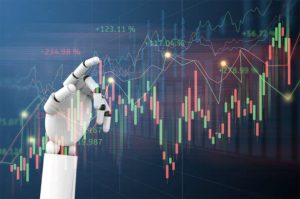The financial world is experiencing a seismic shift as artificial intelligence (AI) technology revolutionizes stock trading. With the rapid advancement of AI, traditional trading methods are becoming obsolete, making way for sophisticated, data-driven strategies that optimize performance and reduce risks. This transformation, driven by Stock Exchange AI, is setting new standards in trading efficiency, accuracy, and profitability. This article explores how Stock Exchange AI is reshaping modern trading, the key benefits it brings, and the future trends we can expect.
Introduction
The Rise of AI in Stock Trading
The integration of AI in stock trading is not merely an evolution but a revolution. Stock Exchange AI leverages machine learning algorithms, big data analytics, and predictive models to make informed trading decisions. Unlike human traders, AI systems can analyze vast amounts of data in real-time, identify patterns, and execute trades with precision. This capability is transforming how trading is conducted, providing a competitive edge to those who embrace it.
Importance of Embracing Stock Exchange AI
Embracing Stock Exchange AI is crucial for staying competitive in today’s fast-paced financial markets. AI-driven trading systems offer numerous advantages, including improved accuracy, reduced latency, and enhanced risk management. As the financial industry continues to evolve, adopting Stock Exchange AI becomes not just an option but a necessity for traders and institutions aiming to maximize returns and stay ahead of the curve.
The Mechanics of Stock Exchange AI

How AI Algorithms Work
AI algorithms in stock trading are designed to process and analyze large datasets to identify trading opportunities. These algorithms use historical data, market trends, and real-time information to make predictions and execute trades. The power of Stock Exchange AI lies in its ability to learn and adapt, continuously improving its performance based on new data.
Machine Learning and Deep Learning
Machine learning and deep learning are at the core of Stock Exchange AI. Machine learning algorithms analyze historical data to identify patterns and trends, while deep learning models, which mimic the human brain’s neural networks, can process complex datasets and make sophisticated predictions. These technologies enable AI systems to make informed trading decisions and adapt to changing market conditions.
Natural Language Processing (NLP)
Natural language processing (NLP) is another critical component of Stock Exchange AI. NLP allows AI systems to analyze textual data, such as news articles, social media posts, and financial reports, to gauge market sentiment and predict price movements. By understanding and interpreting natural language, AI can incorporate qualitative data into its trading strategies, enhancing accuracy and relevance.
Real-Time Data Analysis
One of the most significant advantages of Stock Exchange AI is its ability to analyze data in real-time. This capability allows AI-driven trading systems to react instantly to market changes, execute trades at optimal times, and capitalize on short-term opportunities.
High-Frequency Trading (HFT)
High-frequency trading (HFT) is a prominent application of real-time data analysis. HFT algorithms execute a large number of trades at extremely high speeds, often within milliseconds. By leveraging real-time data, HFT systems can identify and exploit market inefficiencies, resulting in significant profits.
Algorithmic Trading
Algorithmic trading uses predefined rules and criteria to execute trades automatically. These algorithms analyze real-time market data to determine the best times to buy or sell assets. Algorithmic trading minimizes human intervention, reducing errors and emotional biases in trading decisions.
Key Benefits of Stock Exchange AI
Enhanced Trading Accuracy
Stock Exchange AI significantly improves trading accuracy by analyzing vast amounts of data and making data-driven decisions. AI systems can identify patterns and trends that human traders might overlook, leading to more accurate predictions and better trading outcomes.
Predictive Analytics
Predictive analytics is a cornerstone of Stock Exchange AI. By analyzing historical data and current market conditions, AI systems can forecast future price movements and market trends with high accuracy. This capability enables traders to make informed decisions and optimize their strategies.
Sentiment Analysis
Sentiment analysis uses NLP to gauge market sentiment by analyzing textual data from various sources. Understanding market sentiment helps AI systems predict price movements and market trends, providing traders with valuable insights and enhancing trading accuracy.
Improved Risk Management
Effective risk management is crucial for successful trading. Stock Exchange AI offers advanced risk management capabilities, allowing traders to identify and mitigate potential risks proactively.
Anomaly Detection
Anomaly detection algorithms identify unusual patterns in trading data, signaling potential risks or fraudulent activities. This proactive approach enables traders to take preventive measures and safeguard their investments.
Portfolio Optimization
AI-driven portfolio optimization analyzes risk tolerance, investment goals, and market conditions to recommend optimal asset allocations. This ensures a balanced portfolio that maximizes returns while minimizing risks.
Cost Efficiency
Stock Exchange AI enhances cost efficiency by automating trading processes and reducing operational costs. AI-driven trading systems minimize the need for human intervention, lower transaction costs, and improve overall efficiency.
Automated Trading Systems
Automated trading systems use AI to execute trades without human intervention. This reduces labor costs and enhances the speed and accuracy of trading operations.
Reduced Transaction Costs
AI-driven trading minimizes transaction costs by optimizing trade execution and reducing the impact of market fluctuations. This leads to more efficient trading and higher profitability.
Increased Speed and Scalability
AI-driven trading systems operate at high speeds and can scale to handle large volumes of data and trades. This capability enables traders to capitalize on short-term opportunities and manage large portfolios effectively.
Real-Time Trading
Real-time trading allows AI systems to react instantly to market changes and execute trades at optimal times. This enhances trading efficiency and profitability.
Scalable Solutions
AI-driven trading systems can scale to handle large volumes of data and trades, making them suitable for both individual traders and large financial institutions. This scalability ensures consistent performance and reliability in diverse trading environments.
Future Trends in Stock Exchange AI
Integration with Blockchain Technology
The integration of AI with blockchain technology offers significant advantages for stock trading. Blockchain provides a secure and transparent ledger for transactions, while AI enhances data analysis and decision-making processes.
Transparent and Secure Trading
Blockchain ensures transparency and security in trading operations, while AI analyzes blockchain data to detect patterns and anomalies. This combination enhances trust and reliability in financial markets.
Smart Contracts
Smart contracts on blockchain platforms automate trading processes based on pre-defined conditions. AI can enhance smart contracts by optimizing their execution and ensuring compliance with market regulations.
Quantum Computing
Quantum computing has the potential to revolutionize Stock Exchange AI by providing unprecedented computational power. Quantum computers can process complex calculations and large datasets much faster than classical computers, enhancing predictive analytics and risk management.
Enhanced Predictive Models
Quantum computing enables the development of more sophisticated predictive models, improving the accuracy of market forecasts and trading strategies.
Faster Data Processing
Quantum computers can process vast amounts of data in real-time, enabling faster and more efficient trading operations.
Personalized Investment Strategies
The future of Stock Exchange AI lies in personalized investment strategies. AI can analyze individual investor profiles, risk tolerance, and investment goals to provide tailored recommendations and optimize portfolio performance.
Robo-Advisors
Robo-advisors use AI to
offer personalized investment advice and portfolio management. They analyze market data and individual preferences to recommend investment strategies that align with investors’ goals.
Customized Trading Algorithms
AI-driven trading algorithms can be customized to meet individual investor needs. These algorithms adjust trading strategies based on market conditions and investor preferences, ensuring optimal performance.
Ethical and Responsible AI
As Stock Exchange AI continues to evolve, ensuring ethical and responsible AI practices becomes crucial. Financial institutions must implement guidelines and frameworks to promote fairness, transparency, and accountability in AI systems.
Fairness and Bias Mitigation
AI systems must be designed to ensure fairness and mitigate biases. Financial institutions should implement measures to identify and address biases in AI algorithms, ensuring equal opportunities for all investors.
Transparency and Accountability
Transparency and accountability are essential for maintaining trust in AI systems. Financial institutions should provide clear explanations for AI-driven decisions and ensure compliance with regulatory standards.
Explainable AI (XAI)

Explainable AI (XAI) aims to make AI systems more transparent and interpretable. In stock trading, XAI provides clear explanations for AI-driven predictions and decisions, enhancing trust and regulatory compliance.
Interpretable Models
Interpretable models enable traders to understand the reasoning behind AI-driven decisions. This enhances transparency and trust in AI systems.
Regulatory Compliance
Explainable AI helps financial institutions comply with regulatory requirements by providing clear explanations for AI-driven trading decisions.
Implementing Stock Exchange AI: Best Practices
Ensuring Data Quality
Data quality is critical for the success of Stock Exchange AI. Financial institutions should invest in robust data management practices to ensure the accuracy, completeness, and consistency of their data.
Data Cleaning and Preprocessing
Data cleaning and preprocessing involve removing errors and inconsistencies from raw data. This ensures that AI models are trained on high-quality data, improving their accuracy and reliability.
Data Integration
Data integration involves combining data from multiple sources to create a unified dataset. This enhances the comprehensiveness of AI models and improves their predictive capabilities.
Continuous Learning and Development
Continuous learning is essential for staying ahead of the curve in Stock Exchange AI. Financial institutions should invest in ongoing training and development for their AI teams, keeping them updated on the latest advancements and best practices.
Ongoing Training
Ongoing training ensures that AI teams stay current with the latest technologies and techniques. This enhances their ability to develop and implement cutting-edge AI solutions.
Collaboration and Knowledge Sharing
Collaboration and knowledge sharing among AI teams promote innovation and best practices. Financial institutions should encourage cross-disciplinary collaboration to enhance the development and implementation of AI solutions.
Ethical AI Practices
Ensuring ethical AI practices is crucial for maintaining trust and integrity in stock trading. Financial institutions should implement guidelines and frameworks to promote fairness, transparency, and accountability in AI systems.
Ethical Guidelines
Ethical guidelines provide a framework for developing and implementing AI solutions. Financial institutions should establish clear ethical guidelines to ensure responsible AI practices.
Bias Detection and Mitigation
Bias detection and mitigation involve identifying and addressing biases in AI algorithms. Financial institutions should implement measures to ensure fairness and equal opportunities for all investors.
Regulatory Compliance
Regulatory compliance is essential for the successful implementation of Stock Exchange AI. Financial institutions should ensure that their AI systems comply with regulatory standards and guidelines.
Adhering to Regulations
Adhering to regulations ensures that AI systems operate within legal and ethical boundaries. Financial institutions should stay updated on regulatory requirements and ensure compliance with all applicable standards.
Transparency and Accountability
Transparency and accountability are crucial for maintaining trust in AI systems. Financial institutions should provide clear explanations for AI-driven decisions and ensure compliance with regulatory standards.
Conclusion
Stock Exchange AI is transforming modern trading by leveraging advanced algorithms, real-time data analysis, and predictive models. This technology offers numerous benefits, including enhanced trading accuracy, improved risk management, cost efficiency, increased speed and scalability, and personalized investment strategies. As AI continues to evolve, the integration with blockchain technology, quantum computing, and ethical AI practices will shape the future of stock trading.
Embracing Stock Exchange AI is essential for staying competitive in today’s fast-paced financial markets. By implementing best practices and ensuring ethical and responsible AI practices, financial institutions can harness the full potential of this transformative technology and achieve sustainable success in stock trading.
Power of AI in the Stock Exchange for Better Investments in 2024


